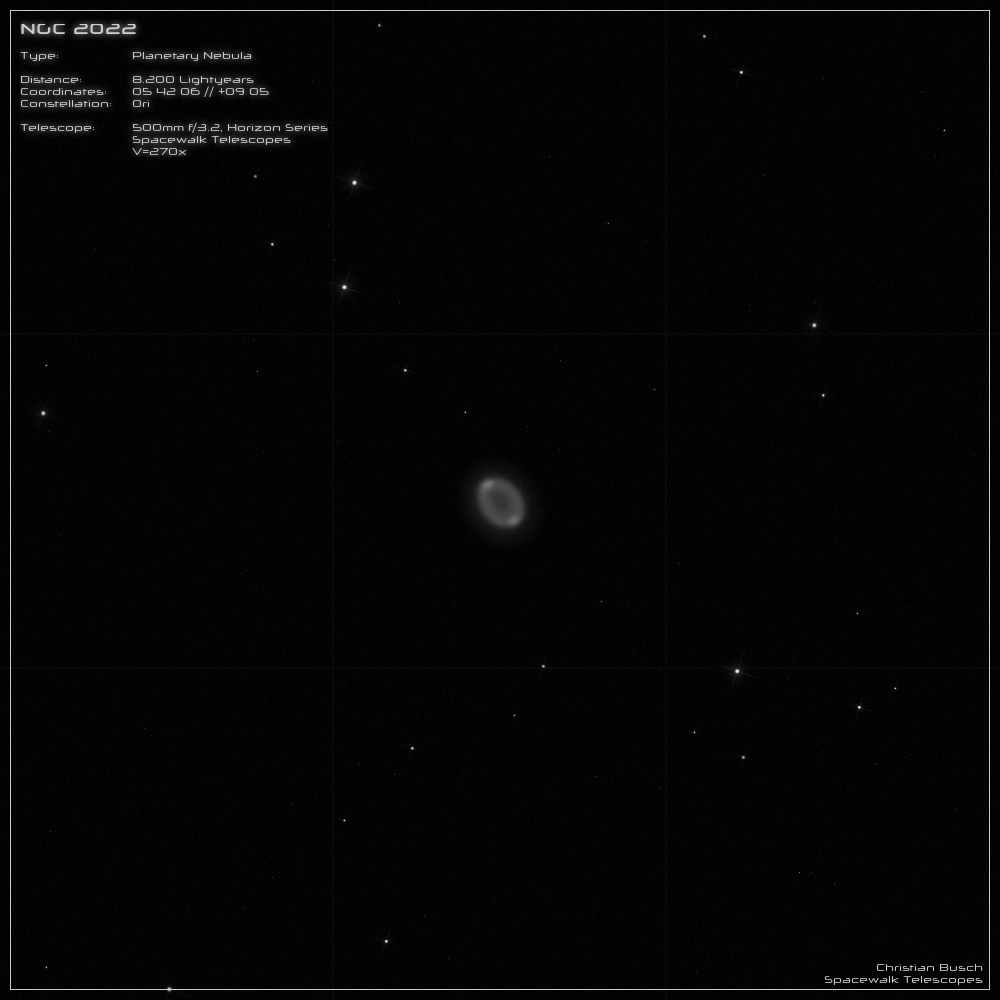NGC 2022 - Planetary Nebula
The planetary nebula "NGC 2022" can be found in the constellation Orion at a distance of about 8,200 light-years. It was discovered by F.W. Herschel
during a cold, clear December night in 1785. With an apparent brightness of 11.6mag and a size of 28" (including the halo even 40") it can be seen
with smaller telescopes.
The PN consists of an inner shell with a radius of 0.33 light-years, moving into space with a speed of 28+-2 km/s. It is surrounded by a second shell
that is nearly spherical and expanding at a slower rate. Both shells together have a total mass of 0.19 solar masses. The extensive halo of NGC 2022
stretches to a distance of 0.8 light-years and consists of material ejected by the star while it was still a red giant. The age of the nebula is estimated to be
3,500 years - so it is relatively young.
The central star is very faint with a visual magnitude of just 15.9mag. But it is extremely hot with a surface temperature of 122,000 Kelvin. This high
temperature is the reason for the high luminosity of the white dwarf (L=850 suns), which by the way is only 92,000 kilometers in diameter.
----------------------------------------------------------------------------------------------------------------------------------------------
In my 20" f/3.2 telescope NGC 2022 is an easy object and can be seen even at a low magnification of 120x as a bright oval disk.
Things become really interesting at 270x. The PN appears as an elliptical ring, which is much darker in the center. Two brighter nodes can be seen at the
long ends. The ring is surrounded by a very faint halo - although I think this is not the halo of the PN itself, but the second shell mentioned above.
The central star was unfortunately not visible under the given conditions.

